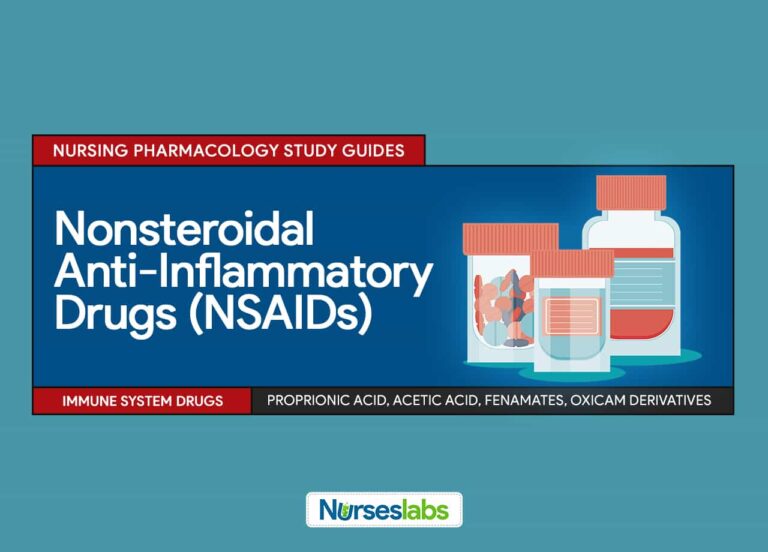Nonsteroidal anti-inflammatory drugs (NSAIDs) provide strong anti-inflammatory and analgesic effects without the adverse effects associated with corticosteroids. These drugs have associated cardiovascular and gastrointestinal risks when taking them.
NSAIDs includes propionic acids, acetic acids, fenamates, oxicam derivatives, and cyclooxygenase-2 (COX-2) inhibitors. They differ in chemical structures but NSAIDs are clinically all-inclusive.
Acetaminophen is a related drug which has antipyretic and analgesic properties but does not have the anti-inflammatory effects of the salicylates or the NSAIDs.
Table of Contents
- NSAIDs: Generic and Brand Names
- Disease Spotlight: Primary Dysmenorrhea
- Therapeutic Action
- Indications
- Pharmacokinetics
- Contraindications and Cautions
- Adverse Effects
- Interactions
- Nursing Considerations
- Practice Quiz: NSAIDs
- Recommended Resources
- See Also
- References and Sources
NSAIDs: Generic and Brand Names
Here is a table of commonly encountered NSAIDs and related agents, their generic names, and brand names:
- Propionic Acids
- fenoprofen (Nalfon)
- flurbiprofen (Ansaid)
- ibuprofen (Motrin, Advil)
- ketoprofen (Orudis)
- naproxen (Naprosyn)
- oxaprozin (Daypro)
- Acetic Acids
- diclofenac (Voltaren, Cataflam)
- etodolac (Lodine)
- indomethacin (Indocin)
- ketorolac (Toradol)
- nabumetone (Relafen)
- sulindac (Clinoril)
- tolmetin (Tolectin)
- Fenamates
- meclofenamate
- mefenamic acid (Ponstel)
- Oxicam Derivatives
- meloxicam (Mobic)
- piroxicam (Feldene)
Disease Spotlight: Primary Dysmenorrhea
- Primary dysmenorrhea is defined as cramping pain in the lower abdomen just before or during menstruation, in the absence of other diseases such as endometriosis. (AAFP, 1999)
- Etiology is not precisely understood but most symptoms can be attributed to the action of uterine prostaglandin, PGF2a. This stimulates uterine contractions, ischemia, and sensitization of nerve endings.
- Prevalence rate is as high as 90 percent and is common among younger women. Some cases are adequately provided relief by OTC NSAIDs.
Therapeutic Action
The desired and beneficial action of NSAIDs is:
- Inhibition of prostaglandin synthesis thereby exerting its anti-inflammatory, analgesic, and antipyretic effects.
- It blocks two enzymes, namely cyclooxygenase (COX) 1 and 2 present in all tissues and seems to be involved in many body functions, like blood clotting, stomach lining, and sodium-water balance in the kidney. COX-1 turns arachidonic acid into prostaglandins as needed. COX-2 is active at sites of trauma or injury when more prostaglandins are needed. Therefore, NSAIDs block inflammation before all of the signs and symptoms can develop.
- Acetaminophen, a related agent, acts directly on the thermoregulatory cells in the hypothalamus to cause sweating and vasodilation causing release of heat. The mechanism related to analgesic effects has not been identified.
Indications
NSAIDs are indicated for the following medical conditions:
- Relief of signs and symptoms of rheumatoid arthritis and osteoarthritis
- Relief of mild to moderate pain
- Treatment of primary dysmenorrhea
- Fever reduction
- Acetaminophen, a related agent, is used to treat moderate to mild pain and fever in children and often used in place of the NSAIDs or salicylates. It is found in many combination products and can cause severe liver toxicity that can lead to death when taken in high doses.
- Acetaminophen is also used in treatment of influenza, for prophylaxis of children receiving diphtheria–pertussis-tetanus (DPT) immunizations, and for relief of musculoskeletal pain associated with arthritis.
Pharmacokinetics
Here are the characteristic interactions of NSAIDs and the body in terms of absorption, distribution, metabolism, and excretion:
| Route | Onset | Peak | Duration |
| Oral | 30 min | 1-2 h | 4-6 h |
| IV | Start of infusion | Minutes | 4-6 h |
| T1/2: -1.8 – 2.5 hrs. Metabolism: liver Excretion: urine |
Contraindications and Cautions
Contraindications and cautions for the use of NSAIDs include:
- Allergy to NSAIDs or salicylate. Prevent adverse effects.
- Allergy to sulfonamides. Contraindication with celecoxib.
- CV dysfunction or hypertension. Varying effects of prostaglandins
- Peptic ulcer or known GI bleeding. Potential to exacerbate GI bleeding.
- Pregnancy or lactation. Potential adverse effects on the neonate or mother.
- Renal or hepatic dysfunction. Can alter metabolism and excretion of the drug.
- Any other known allergies. Indicate increased sensitivity.
Adverse Effects
Use of NSAIDs may result to these adverse effects:
- CNS: headache, dizziness, somnolence, fatigue
- CV: hypertension
- GI: nausea, dyspepsia, GI pain, constipation, diarrhea, flatulence
- Hema: bleeding, platelet inhibition, bone marrow depression
Interactions
The following are drug-drug interactions involved in the use of NSAIDs:
- Loop diuretics: decreased diuretic effect
- Beta-blockers: decreased antihypertensive effect
- Ibuprofen: potential for lithium toxicity
- Oral anticoagulants: increased bleeding with acetaminophen
- Chronic ethanol ingestion: risk of toxicity with acetaminophen
Nursing Considerations
Nursing considerations in patients taking NSAIDs are the same as that of patients taking anti-inflammatory agents.
Practice Quiz: NSAIDs
Here are some practice questions for this study guide. Please visit our nursing test bank page for more NCLEX practice questions.
1. Nurse Kate is taking care of patients taking ibuprofen. Which of the following should be included in her assessment and monitoring?
A. Blood pressure and bowel sounds
B. Weight and appetite
C. Muscle strength and range of motion
D. Respiratory rate, depth, and rhythm
1. Answer: A. Blood pressure and bowel sounds
NSAIDs are associated with CV (hypertension) and GI (constipation, diarrhea, etc.) adverse effects. All other options are not related.
2. Upon checking the medication chart, Nurse Mike found out that his patient is taking both acetaminophen and furosemide. Which of the following interventions is an appropriate nursing action for these two drugs?
A. Administer medications as they are because they enhance drug actions.
B. Measure patient’s intake and output closely.
C. Arrange for SGPT monitoring.
D. Assess for signs and symptoms of bleeding.
2. Answer: B. Measure patient’s intake and output closely.
Acetaminophen can decrease the diuretic effect of loop diuretics so it is important to monitor patient for fluid retention.
3. Which of the following patient manifests acetaminophen toxicity?
A. Marie, 26, with new-onset jaundice while on drug therapy
B. Eva, 54, with difficulty of breathing while on drug therapy
C. Steven, 37, with joint stiffness while on drug therapy
D. Robert, 29, with new-onset glaucoma while on drug therapy
3. Answer: A. Marie, 26, with new-onset jaundice while on drug therapy
Acetaminophen toxicity manifests as severe hepatotoxicity.
4. Which enzyme is found in active sites of trauma or injury?
A. Streptokinase
B. COX-1
C. alpha-ketoglutarate
D. COX-2
4. Answer: D. COX-2
The presence of this enzyme in active sites of trauma prompts increase in prostaglandins. NSAIDs block COX-2 before signs and symptoms of inflammation can develop.
5. The patient asked the nurse of how soon pain relief will be achieved after a dose of intravenous NSAIDs. The nurse would be correct by answering:
A. 5-10 minutes depending on the site involved
B. at the start of infusion
C. 30 minutes since pain is usually extensive
D. at the first hour of infusion
5. Answer: B. at the start of infusion
Onset of action of IV NSAIDs is immediately after infusion. In oral form, onset is 30 minutes after administration.
6. Which of the following NSAID pairing is correct?
A. propionic acid: indomethacin
B. acetic acid: ibuprofen
C. oxicam derivatives: naproxen
D. fenamates: mefenamic acid
6. Answer: D. fenamates: mefenamic acid
Ibuprofen is a propionic acid and indomethacin is an acetic acid.
Recommended Resources
Our recommended nursing pharmacology resources and books:
Disclosure: Included below are affiliate links from Amazon at no additional cost from you. We may earn a small commission from your purchase which will help support us. Thank you! For more information, check out our privacy policy.
Pharm Phlash! Pharmacology Flash Cards #1 BEST SELLER!
Test-yourself review cards put critical clinical information for nearly 400 of the top generic medications at your fingertips. And, you can count on them for accuracy, because each card is based on content from Davis’s Drug Guide for Nurses. Increase your test scores in pharmacology class.
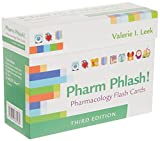
Focus on Pharmacology (8th Edition)
Focus on Nursing Pharmacology makes challenging concepts more approachable. Engaging learning features cultivate your clinical application, critical thinking and patient education capabilities. This updated 8th edition builds on your knowledge of physiology, chemistry and nursing fundamentals to help you conceptualize need-to-know information about each group of drugs.
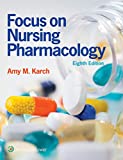
Pharmacology Made Incredibly Easy (Incredibly Easy! Series®)
Nursing pharmacology guide offers step-by-step guidance so you can grasp the fundamentals in enjoyable Incredibly Easy style. This is the perfect supplement to class materials, offering solid preparation for NCLEX® as well as a handy refresher for experienced nurses. Colorfully illustrated chapters offer clear, concise descriptions of crucial nursing pharmacology concepts and procedures.
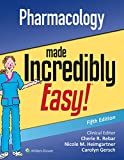
Lehne’s Pharmacology for Nursing Care (11th Edition)
The Eleventh Edition of Lehne’s Pharmacology for Nursing Care provides a thorough understanding of key drugs and their implications for nursing care. This text, written by renowned nursing educators, helps you comprehend and apply pharmacology principles. A clear and engaging writing style simplifies complex concepts, making even the most challenging pharmacology content enjoyable. We recommend this book if you want a comprehensive nursing pharmacology guide.
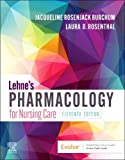
Nursing Drug Handbook
Nursing2023 Drug Handbook delivers evidence-based, nursing-focused drug monographs for nearly 3700 generic, brand-name, and combination drugs. With a tabbed, alphabetical organization and a “New Drugs” section, NDH2023 makes it easy to check drug facts on the spot.
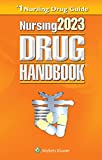
Pharmacology and the Nursing Process
The 10th edition of Pharmacology and the Nursing Process offers practical, user-friendly pharmacology information. The photo atlas contains over 100 unique illustrations and photographs depicting drug administration techniques. Updated drug content reflects the most recent FDA drug approvals, withdrawals, and therapeutic uses.
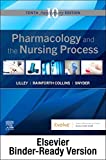
Mosby’s Pharmacology Memory NoteCards: Visual, Mnemonic, and Memory Aids for Nurses
The 6th edition of Mosby’s Pharmacology Memory NoteCards: Visual, Mnemonic, & Memory Aids for Nurses incorporates illustrations and humor to make studying easier and more enjoyable. This unique pharmacology review can be utilized as a spiral-bound notebook or as individual flashcards, making it ideal for mobile study.
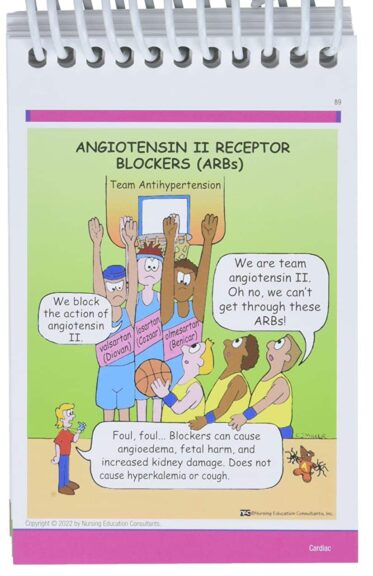
See Also
Here are other nursing pharmacology study guides:
- Nursing Pharmacology – Study Guide for Nurses
Our collection of topics related to nursing pharmacology - Pharmacology Nursing Mnemonics & Tips
These nursing mnemonics aim to simplify the concepts of pharmacology through the use of a simple, concise guide. - Generic Drug Name Stems Cheat Sheet
Learn about these generic drug name stems to help you make sense of drugs easier! - Common Drugs and Their Antidotes
A guide to drug antidotes that nurses should be familiar about. - IV Fluids and Solutions Guide & Cheat Sheet
Get to know the different types of intravenous solutions or IV fluids in this guide and cheat sheet. - Drug Dosage Calculations NCLEX Practice Questions (100+ Items)
Care to take the challenge? This quiz aims to help students and registered nurses alike grasp and master the concepts of medication calculation.
Drug Guides NEW!
Individual drug guides and nursing considerations for the most common medications used in nursing pharmacology:
- Acetaminophen (Tylenol)
- Aspirin
- Atorvastatin (Lipitor)
- Enoxaparin (Lovenox)
- Furosemide (Lasix)
- Gabapentin
- Hydromorphone (Dilaudid)
- Lisinopril
- Metoprolol
- Morphine
Gastrointestinal System Drugs
Respiratory System Drugs
- Antihistamines
- Bronchodilators and Antiasthmatics
- Decongestants
- Expectorants and Mucolytics
- Inhaled Steroids
- Lung Surfactants
Endocrine System Drugs
- Adrenocortical Agents
- Antidiabetic Agents
- Glucose-Elevating Agents
- Hypothalamic Agents
- Insulin
- Parathyroid Agents: Bisphosphonates, Calcitonins
- Pituitary Drugs
- Sulfonylureas
- Thyroid Agents
Autonomic Nervous System Drugs
- Adrenergic Agonists (Sympathomimetics)
- Adrenergic Antagonists (Sympatholytics)
- Anticholinergics (Parasympatholytics)
- Cholinergic Agonists (Parasympathomimetics)
Immune System Drugs
Chemotherapeutic Agents
- Anthelmintics
- Anti-Infective Drugs
- Antibiotics
- Antifungals
- Antineoplastic Agents
- Antiprotozoal Drugs
- Antiviral Drugs
Reproductive System Drugs
Nervous System Drugs
- Antidepressants
- Antiparkinsonism Drugs
- Antiseizure Drugs
- Anxiolytics and Hypnotic Drugs
- General and Local Anesthetics
- Muscle Relaxants
- Narcotics, Narcotic Agonists, and Antimigraine Agents
- Neuromuscular Junction Blocking Agents
- Psychotherapeutic Drugs
Cardiovascular System Drugs
References and Sources
References and sources for this pharmacology guide for NSAIDs:
- Karch, A. M., & Karch. (2011). Focus on nursing pharmacology. Wolters Kluwer Health/Lippincott Williams & Wilkins. [Link]
- Katzung, B. G. (2017). Basic and clinical pharmacology. McGraw-Hill Education.
- Lehne, R. A., Moore, L. A., Crosby, L. J., & Hamilton, D. B. (2004). Pharmacology for nursing care.
- Smeltzer, S. C., & Bare, B. G. (1992). Brunner & Suddarth’s textbook of medical-surgical nursing. Philadelphia: JB Lippincott.
